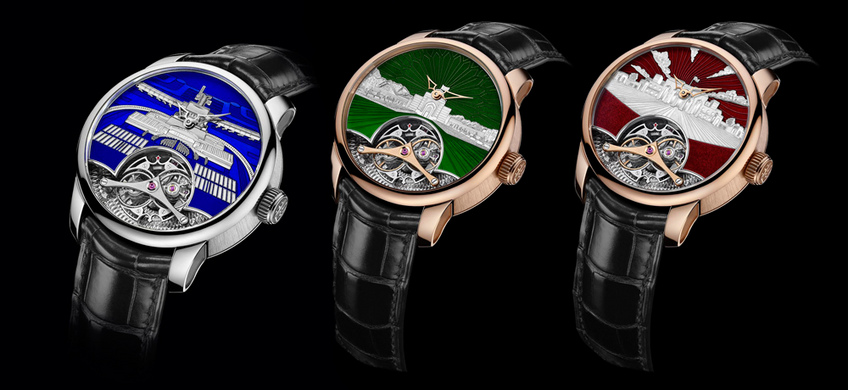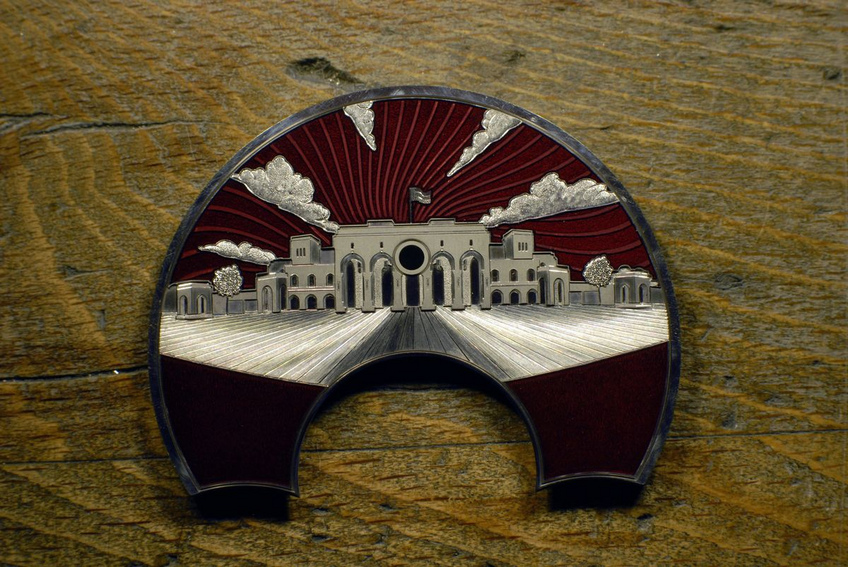

Mechanical and manual crafts at Rudis Sylva
After hundreds of hours of work, a prestigious order of three unique pieces signed by the brand with the three-fir logo is on its way to Oman. The pieces are an ode to craftsmanship.
Since BaselWorld 2009, expert Haute Horlogerie fanatics do no longer need to see the three-fir logo to recognize Rudis Sylva products. Once we succumb to the hypnotic charm of the “Oscillateur Harmonieux” movement, we will always be able to distinguish it from any other complication. At a time when tourbillons, karussels and resonance systems are striving to look for potential growth markets, it was ingenious to create an innovation that the greatest master watchmakers acknowledged to be as important as the Breguet tourbillon. This rare creation appealed to Haute Horlogerie fan Mohammed Zaman, for whom Jacky Epitaux, CEO of Rudis Sylva, recently created the three spectacular pieces in tribute to the new era of the Sultanate of Oman.

Manual watchmaking crafts
Watchmaking aficionados know that details always make the difference. Yet, in order to understand this it is not enough to take a watch in our hand and admire it. In order to appreciate the true codes of prestigious watchmaking we need to look at pieces closely and admire the nuances and the incredible execution of manual work. Such is the case of these three watches, whose dial’s bottom openworked section fulfills a double aim: to show the watch’s movement and to evoke the domes in the magical East. The pieces are decorated with manual engravings and Grand Feu enamels and they feature contemporary architectural works that illustrate the Sultanate’s modernity; namely the airport, the Opera and the Parliament. Sylvain Bettex, engraver at Glypto, drew these based on photos, an even more complicated task seeing as the airport had not been finished at the time. The “bas relief” technique gives the dials a 3D dimension; a highly artistic piece of work that gives the pieces some depth thus allowing the enamel to be clearly differentiated.

“The challenge here was to highlight the engraving’s refinement whilst playing with transparency”, confirms Sophie Cattin Morales, the local enameller who carried out several tests of color, heating and size-grading before the 18-month project started. This was a clear sign of the meticulous work they had ahead of them.
Placing the enamel in the “champs-levés” – heating, polishing, applying finishes and then adding one more layer of enamel and rhodium-plating – are some of the successive operations and extreme precautions that are needed to prevent any damage to the work that has already been carried out. This means dedicating 40 hours to engraving each one of the dials, plus the 10 hours devoted to designing the enamel beforehand. In that sense, it should be noted that the manual chamfering of each corner of the titanium bridges took 20 minutes; in other words, it was ten times slower than machining. This work was carried out by Olivier Bourquard from the Arrigoni Laufer workshop, who also made the skeletonized fir-shaped hands.
A high-precision mechanism for a true manufacture
Eight years after it was introduced, the “Oscillateur Harmonieux” is still the talk of the town. Not surprising, as up until then adding a constraint to a balance was watchmaking’s supreme taboo. The movement has two interlinked toothed balances that consist of two opposed balance springs, thus enabling each second to compensate the effect of gravity as opposed to karussels and tourbillons, which need one-minute adjustments. This patented invention still fascinates and puzzles Haute Horlogerie enthusiasts and is a source of legitimate pride for both the brand and Mikka Rissanen, its creator.
The complication – which shines in all its glory thanks to the work of engine-turner Georges Brodbeck – has been placed inside the case of the RS 12, available in either white or pink gold. The whole constitutes the base of Rudis Sylva manual movements of which 7 components (including the escapement) are not made in-house. According to the founding director’s motto, this kind of transparency “does not only highlight local skills but it also brings rare skills to the spotlight”. We very much hope that it will be seen like that in Oman.






